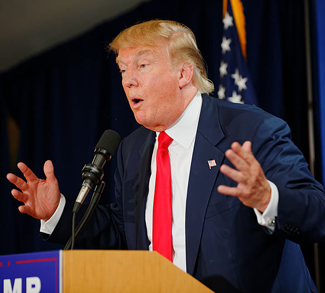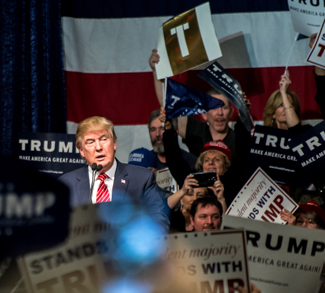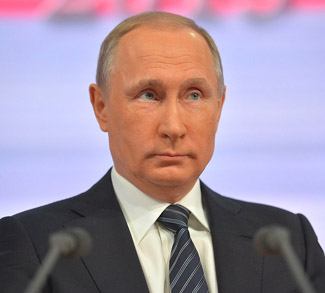The “Trump Train” (once a Twitter hashtag and then a successful metaphor of the assertive, and to date unstoppable, reform winds blown by Donald Trump) has finally arrived at the White House. But this is very likely not the final destination of its journey. The Trump Train could soon arrive in Europe.
And it would be a return trip. As Donald Trump frequently made reference to, his campaign owes a lot of its inspiration to the Brexit movement. Surely Trump got into politics well before that, but after June he’s started referring to his rise as a “Brexit plus plus plus.” And it wasn’t just a motivational motto.
The Trumpist’s and Brexiteer’s final arguments strictly resemble one another: a proudly nationalistic rebuttal of the adverse fallouts of globalization, from industrial outsourcing to the (Western) self-hating ideology of extreme multiculturalism. The Trump Train and the Brexit share also a common grassroots social base of support, which are the White working and middle classes of small cities and rural areas especially.
Even if US society remains very different from that of Europe, the rampant globalization of recent decades has made them quite close compared to half a century ago. Both the U.S. and Europe has experienced massive deindustrialization with a geographical concentration of the remaining high-tech industries in a few islands of happiness – few compared to the many rust belts of the Western world. Both the U.S. and Europe have seen a deep financialization of their economies. Both the U.S. and Europe have been overwhelmed by the new ideology of the so-called politically correct, a post-modern, constructivist, relativist and anti-Western set of theories and practices. It’s true: in the U.S. you can find also the Bible Belt, but if we consider the European Union as a whole, we could see a Catholic Belt in its Eastern countries, opposed to Sweden (a European California) or London and Paris (European New Yorks) or in general the more liberal Western countries. Exactly as in the U.S., also in Europe, post-modernism is currently hegemonic in colleges and mainstream media, which are trying to inculcate it also in the common man, and the common woman – and the common *… Finally, the massive immigration flows of last decades into Europe are making her society more and more resemble the composite ethnic mix of North American society.
In such similar environments, it is predictable to find similar political trends and demands. Brexit- and Trump-like movements are in high gear throughout Europe, with very few notable exceptions (as Spain, but maybe only because the Partido Popular is quite more right-wing than its conservative counterparts in other countries). The working class vote has yet largely migrated from the Left to the Right, whereas the upper class is now proudly leftist in majority. Larger cities are the liberal strongholds while the suburbs are swarmed by Brexiteer-style so-called “populists.”
You have read in every possible way how Trump prevailed among White electorate by 60%-40%, losing Blacks (10%-90%) and Hispanics (35%-65%) by substantial margins. Surely we cannot trust too much pollsters’s statistics, but they are perfectly in line with surveys in previous elections. Now, take the Brexit vote: White voters chose Leave by a notable (and indeed determining the final result) margin of 53%-47%, which would be ever wider if it was not for the Scotland and Northern Ireland’s White voters, who had very particular and local-specific reason for prefering Remain. Anyway, they were not Scots or Irish the ethnic groups that by a larger majority voted for remain in the European Union. They were Asians (65%-35%), Muslims (70%-30%) and Blacks (75%-25%) instead.
No wonder if, looking into the foreign-born voters in Europe, or also second and third-generation immigrants, we will find a clear support for the Left. And since those groups are now numerically very considerable in many countries, they can actually determine the outcome of an European election. Precisely as Blacks and Hispanics in the US have been decisive in the elections of Presidents Kennedy, Carter, Clinton and Obama, all with minor approval among Whites. Prompting White voters to move rightwards
With all these similarities in place, it becomes very likely for Europe to follow on the path already taken by US politics. Bets are open on which major European country will be the first stop of the Trump Train.




